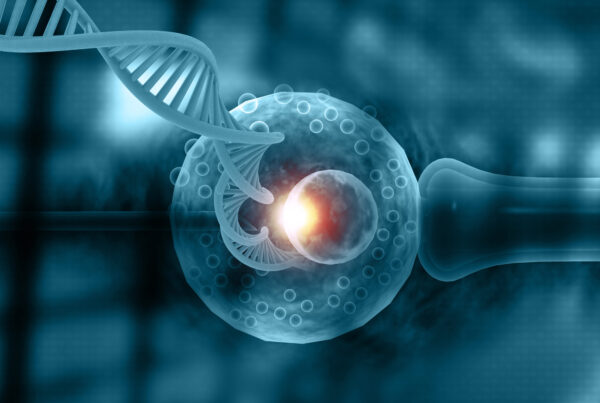Every couple has a 50/50 chance of conceiving a boy or a girl through plain old-fashioned intercourse. It has always been the practice for couples to have their heart set on having a boy or girl even before they have achieved conception.
People desire to have a boy or girl for many reasons ranging from cultural necessity for dreams of raising a son or a daughter, or simply to balance out their families. Yet others do it to prevent their offspring from inheriting sex-linked genetic diseases.
There are various reasons why a couple may want a child of a particular gender, therefore choosing the sex of a baby during pregnancy and before birth is commonplace.
Sex selection or gender selection is possible these days because there are assisted reproductive technologies that can help you choose to have a girl or a boy even though some fertility clinics offer sex selection technology only for medical reasons.
There are quite a few medical and non-medical reasons parents may want to have a child of a specific sex. On the medical side, there are some sex-linked genetic diseases such as hemophilia and Duchenne muscular dystrophy that almost always occur in boys. If a family has a history of these diseases, they may wish to conceive a girl.
However, most people hoping specifically for a boy or girl want to do so for non-medical reasons. By far the most common reason for opting for sex selection is family balancing. Family balancing can be explained as a situation when a family already has a child (or many children) of one sex, and hopes the next child will be of the opposite sex.
Or, if a couple decides to have two children, and they already have a boy (or girl), they may be more determined that their second child be the other sex.
In families with all boys, couples are more likely to increase their originally planned family size, in hopes that the next one will “finally” be a girl.
Family balancing is usually an immediate family consideration, but it can also be an extended family issue. For instance, if a grandparent has only granddaughters, one of their children may hope to give the grandparent a grandson (or vice versa).
Parents may also prefer to have either a boy or girl if they prefer to raise a child of a specific sex.
A couple may plan to have only one child and may strongly prefer that child be a boy (or a girl). Or, a planned single mother, for example, may feel more comfortable raising a girl. A single male having a child with a surrogate may feel more comfortable raising a boy.
Of course there are cultural and religious reasons. Some cultures and beliefs favor one sex over the other. Death of a child is another possible reason. If parents lose a child, they may hope to have another child of the same gender. Alternatively, they may want to have a child of the opposite sex, to try to avoid bad memories associated with their loss.
Whatever the reason, some parents will place unrealistic hopes on a sex-determination technique and become disappointed whether or not they succeed. The method could either fail to produce a baby of the desired sex, or the right-gendered child could grow up with traits that contradict with parental expectations.
There are quite a number of natural and unnatural theories of so-called “tried and true” formula for choosing the baby’s sex.
One of the most well-known natural strategies for choosing the sex of a child is a plan that involves timing intercourse to a woman’s cycle and assuming certain sexual positions.
Known as the Shettles method, it functions on the theory that the male (Y) sperm is smaller, faster, and more short-lived than the female (X) sperm. Because of this, it is better for boy-desiring couples to have sex closest to the time when a woman’s egg is released (ovulation). This way, the speedy male sperm could get to the egg sooner than the female one.
The Y chromosome apparently also enjoys an advantage over the X chromosome counterpart when the sperm is discharged as close as possible to the opening of the cervix. The theory argues that this is best achieved through rear entry intercourse (man enters woman from behind).
For parents desiring a girl, sex in the missionary position (face to face, man on top) about two to four days before ovulation is believed to be the ideal so that by the time the egg comes, only the heartier, more resilient X sperm will remain in the woman’s reproductive tract.
Many couples may not know it, but they can actually accurately determine the sex of their baby before birth, thanks to modern Assisted Reproduction Techniques, ART.
For practical purposes, the main factors that determine the sex of a child are the parents’ X and Y-chromosomes. The egg always carries the X chromosome, while the sperm either contributes an X or Y to the embryo.
If a Y-sperm fertilizes the egg, you get XY—a boy. If an X-sperm fertilizes the egg, you get XX—a girl. (There are genetic diseases where an additional sex chromosome is present, like with Klinefelter syndrome (XXY).
There is 50-50 chance of the babies born being boys and half girls, but that isn’t actually true, However, the dynamics of natural sex selection within a family are complicated and can be affected by the length between pregnancies, birth order, exposure to environmental toxins, and other factors
The only acknowledged scientific way to have a child of a specific sex—with almost 99 percent accuracy—is with IVF and preimplantation genetic diagnosis, or PGD.
To determine sex, PGD involves examining an embryo taken from the uterus and replacing only the embryo of the desired sex.
This assisted reproductive technology was invented to help avoid particular genetic disease, and that is still its primary use. However, IVF-PGD can also be used to conceive a child of a specific sex for non-medical reasons.
With IVF, fertility drugs are used to stimulate the ovaries of the woman. The idea is to get the ovaries to mature many eggs, instead of the usual one or two that occur in a natural cycle.
At about mid-cycle, while the woman is under anesthesia, an ultrasound-guided needle is placed through the vaginal wall to retrieve the eggs. The male partner provides a sperm sample unless a sperm donor is being used. Then, in the lab, the eggs and sperm are put together. Some of the eggs become fertilized and form embryos.
For the PGD part of the procedure, a few cells are biopsied from the developing embryos. These are sent for genetic evaluation. This is how it’s determined which embryos are XX (girls) and XY (boys).
The woman (or couple) can then decide which embryos are transferred back into the woman’s uterus. For example, if the couple wants a girl, only XX embryos are considered.
There is no guarantee you will get any embryos of the sex you prefer. You could get all XX or all XY embryos. (Sperm sorting may improve your odds; see more on this below.)
As an intending parent, you’ll need to consider what you’ll do with the extra embryos of the sex you didn’t want. (You could possibly donate them to an infertile couple, dispose of them, or offer them for research.)
However, note that a transferred embryo doesn’t mean you’re taking home a baby.
And it is not every fertility clinic that is willing to offer IVF with PGD for non-medical reasons, although some will consider it for family balancing.
One other medical technique that is not as successful as IVF with PGD, but has more scientific validity than “natural” methods is known as “sperm sorting”, or MicroSort.
What it involves is that a man provides a sperm sample (the semen sample may come from a sperm donor), it then goes through a special washing process to remove seminal fluids and non-moving sperm.
Then, the sperm cells are stained with a special dye that reacts with DNA content found in sperm cells. The sperm cells are placed in a flow cytometer, which is a technology that enables the identification of particles in a fluid as they pass by a laser. X-sperm cells leave more DNA content than Y-sperm cells, so the dyed X-sperm cells light up brighter when they pass by ultraviolet light.
The sperm cells are then sorted and identified, one by one. The X or Y-concentrated sample is then either transferred to the woman’s uterus via IUI, or they can be used along with IVF alone or IVF-PGD.
The best available is method is PGD because it is almost 100 percent certain of selecting the desired sex.




